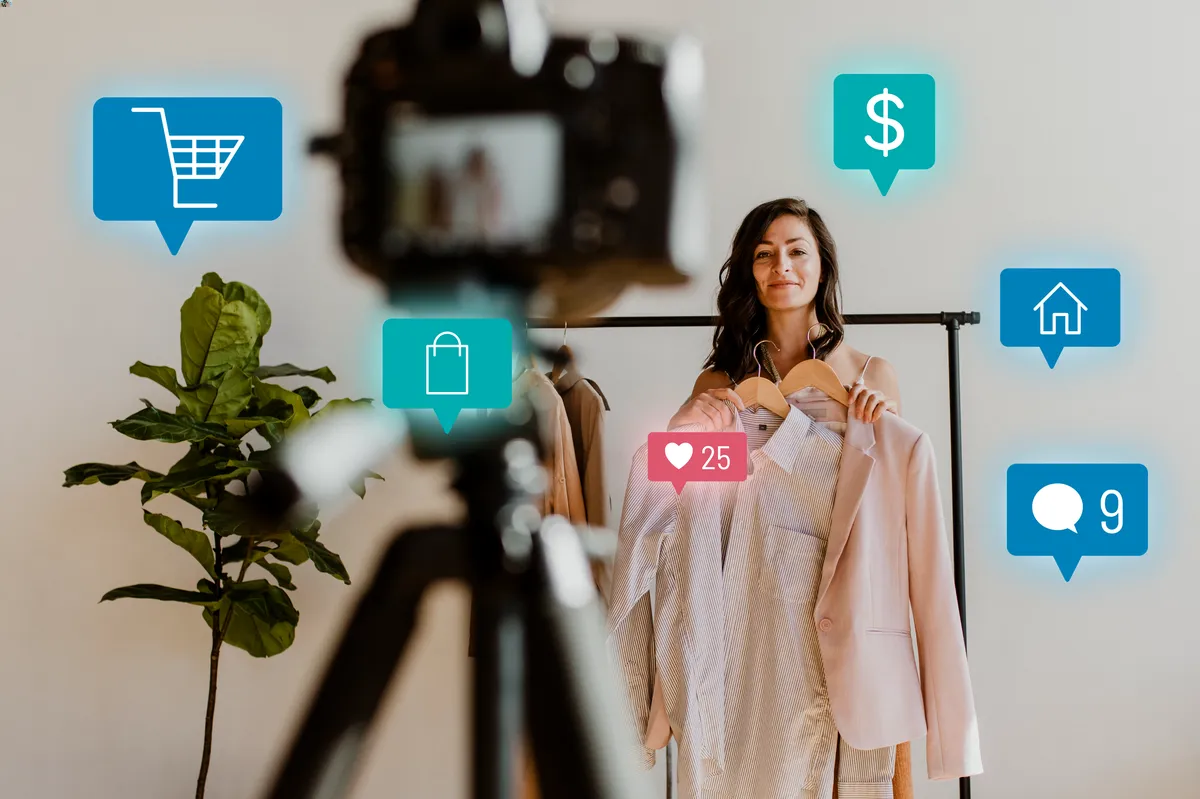The digital landscape is constantly evolving, and with it, the way we shop. Two powerful forces have converged to reshape the e-commerce experience: social commerce and live shopping. Individually potent, together they form a dynamic duo, revolutionizing how brands connect with customers and drive sales.
This comprehensive guide dives deep into the world of social commerce and live shopping, exploring their synergy, benefits, strategies, and the exciting future they hold.
What is Social Commerce?
Social commerce is the integration of shopping experiences directly within social media platforms. It’s more than just posting product links; it’s about creating a seamless journey from discovery to purchase, all within the familiar environment of social media.
Think of it as bringing the shopping mall directly to where people already spend their time online.
Key Components of Social Commerce:
- In-app shopping: “Buy buttons,” product tags, and integrated checkouts allow users to purchase without leaving the platform.
- Product discovery: Social media algorithms and targeted advertising help brands reach their ideal customers with relevant products.
- Social proof: Reviews, ratings, and user-generated content build trust and encourage purchases.
- Influencer marketing: Collaborating with influencers to promote products to their followers.
- Community building: Creating online communities around brands and products to foster engagement and loyalty.
What is Live Shopping?
Live shopping takes the social commerce experience to the next level by combining the excitement of live video with the convenience of online shopping. Brands host real-time broadcasts where they showcase products, demonstrate their features, answer questions, and offer exclusive deals.
Viewers can interact with the host and other viewers, creating a sense of community and urgency.
Key Features of Live Shopping:
- Real-time interaction: Viewers can chat with the host and ask questions about the products.
- Product demonstrations: Hosts can showcase products in action, highlighting their benefits and features.
- Exclusive deals and promotions: Live shopping events often feature limited-time discounts and offers.
- Sense of urgency: The live format creates a fear of missing out (FOMO), encouraging immediate purchases.
- Community building: Viewers can interact with each other, creating a sense of community around the brand.
The Synergistic Power of Social Commerce and Live Shopping
When combined, social commerce and live shopping create a powerful synergy that amplifies the benefits of both.
Live shopping seamlessly integrates into the social commerce ecosystem, leveraging the existing audience and infrastructure of social media platforms. Here’s how they work together:
- Increased Engagement: Live shopping events generate high levels of engagement, attracting viewers who are already interested in the brand or product category.
- Enhanced Product Discovery: Live demonstrations and interactive Q&As provide a richer product experience than static product listings.
- Boosted Conversions: The combination of real-time interaction, exclusive deals, and FOMO drives higher conversion rates.
- Strengthened Customer Relationships: Live shopping fosters a sense of community and allows brands to connect with their customers on a more personal level.
- Data-Driven Insights: Both social commerce and live shopping generate valuable data that can be used to improve marketing strategies and product development.
Benefits for Businesses
- Increased Sales: The combined power of social commerce and live shopping leads to higher sales volumes and revenue.
- Improved Brand Awareness: Live shopping events can generate buzz and reach a wider audience.
- Enhanced Customer Engagement: Real-time interaction and community building foster stronger customer relationships.
- Valuable Customer Insights: Data from social commerce and live shopping provides valuable insights into customer preferences and behavior.
- Reduced Marketing Costs: Social commerce and live shopping can be more cost-effective than traditional marketing methods.
Benefits for Consumers
- Convenient Shopping Experience: Consumers can shop from the comfort of their own homes, using their preferred social media platforms.
- Interactive Product Discovery: Live demonstrations and Q&As provide a richer product experience.
- Access to Exclusive Deals: Live shopping events often feature limited-time discounts and offers.
- Community Engagement: Consumers can connect with other viewers and build a sense of community around the brand.
- Personalized Experience: Social media platforms use data to personalize product recommendations and offers.
Strategies for Success
- Choose the Right Platform: Select the social media platforms that are most popular with your target audience.
- Develop a Compelling Content Strategy: Create engaging live shopping events that showcase your products in an informative and entertaining way.
- Promote Your Live Shopping Events: Use social media and other marketing channels to promote your live shopping events and attract viewers.
- Offer Exclusive Deals and Promotions: Incentivize viewers to make purchases during the live event.
- Engage with Your Audience: Respond to questions and comments during the live event to build relationships with your viewers.
- Partner with Influencers: Collaborate with influencers to reach a wider audience and build credibility.
- Analyze Your Results: Track your key metrics and use the data to improve your social commerce and live shopping strategies.
The Future of Social Commerce and Live Shopping
The future of social commerce and live shopping is bright. As technology continues to evolve, we can expect to see even more innovative and engaging shopping experiences. Here are some trends to watch:
- Increased Personalization: AI and machine learning will be used to personalize product recommendations and offers.
- Augmented Reality (AR) Integration: AR will allow shoppers to “try on” clothes or visualize products in their homes before buying.
- Metaverse Integration: Live shopping experiences may be integrated into virtual worlds and the metaverse.
- Seamless Omnichannel Integration: Social commerce and live shopping will be integrated with other sales channels to create a seamless omnichannel experience.
Conclusion
Social commerce and live shopping are transforming the e-commerce landscape.
By combining the reach of social media with the engaging format of live video, these two forces are creating a dynamic duo that is reshaping how brands connect with customers and drive sales.
Businesses that embrace these trends will be well-positioned for success in the future of e-commerce. This is not just a trend; it’s a fundamental shift in how we shop, and businesses that adapt will thrive.



